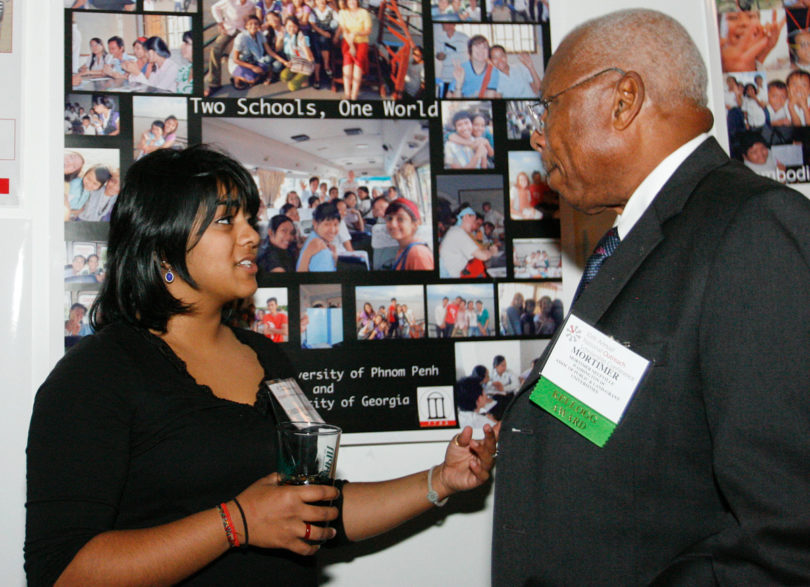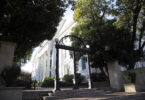American colleges and universities must lead the way to a brighter future by acting as the connective and supportive engines in their local communities and across the globe, said scholars at the 10th annual National Outreach Scholarship Conference held at UGA from Sept. 28-30.
As the nation’s first land-grant university, UGA is a member of the National Outreach Scholarship Partnership, a consortium of 12 universities that take turns hosting the annual conference. The event was organized by a UGA planning committee co-chaired by Trish Kalivoda, senior associate vice president for public service, and Bill Crowe, director of the Georgia Center for Continuing Education Conference Center and Hotel.
“The conference was superb. Our goal was to advance the national dialogue about civic connections made by colleges and universities with their local communities, as well as with communities across the country and around the world,” said Art Dunning, vice president for public service and outreach. “I think that was accomplished.”
E. Gordon Gee, president of the land-grant institution Ohio State University, delivered the opening keynote address. In it, he explained how the modern world has extended land-grant missions beyond state borders.
“The sum of the equation is this: America’s public universities and particularly its land-grant institutions, must reach out as never before to understand the needs of our communities and address them as partners. That is the model of the new American university,” he said. “It is our moral duty. Never have we been called upon so urgently to act . . . This is a galvanizing moment for higher education. Our profound purpose has never been clearer. We cannot act as the Praetorian Guard, fiercely encircling our institutions’ home ground and protecting our precious resources. We are, in fact, guardians of a wholly different kind. We are guardians of the uniquely American ideal and practice of higher education, one that sustains the world’s strongest and most diverse colleges and universities, one that prides debate and aggressively seeks solutions to the world’s most pressing problems. Our task in our most defining moment is not only to protect and preserve our profound legacy. It is to extend it.
“And many of our institutions are doing just that, approaching the matter from a perspective of inclusion, opportunity and true commitment to the community,” he added.
“Our colleges and universities must consistently be seasoned pathways to find solutions to global problems, enhance our neighborhoods and schools, conduct research and fuel our nation’s economic prosperity. Those ideals are firmly embedded in the missions of our land-grand universities.”
For higher education to be effective, however, it must cater to the needs of a rapidly changing population, according to Steve Murdock, director of the U.S. Census Bureau, who examined statistics that point to the rising minority populations in the U.S. These populations are underserved by current educational models, and it’s the duty of colleges and universities to not only reach out to these groups, but also to educate the majority about its increasingly dependent ties on its new neighbors.
“I argue that no fact is more important for the United States and every state in it than the fact that the greatest challenge in the U.S. is to ensure that the minority populations have the education and skills they need to be competitive,” he said. “Everything I see shows me that without that, we will have a poor and less competitive future than we have today if we do not ensure that those parts of the populations that have not been fully involved in the education system and fully involved in the economic system are involved in both.”
As the Baby Boomer population ages and begins to retire, its connection to the new population does not fade, he added.
“The opportunities that come with aging and the opportunities that come with diversity are tied together. If I as an aging Anglo forget that the quality of the roads, the quality of schools and the quality of nursing homes depends on the quality of the working age population, which will be majority minority, I forget that to my own detriment,” he said. “We have got to understand that our fates are intertwined and interrelated.”
The eight other universities involved in the Outreach Scholarship Conference Partnership are: Michigan State University, North Carolina State University, Ohio State University, Pennsylvania State University, Purdue University, the University of Alabama, the University of Kentucky and the University of Wisconsin-Extension. Next year, the conference will be held at North Carolina State University.






